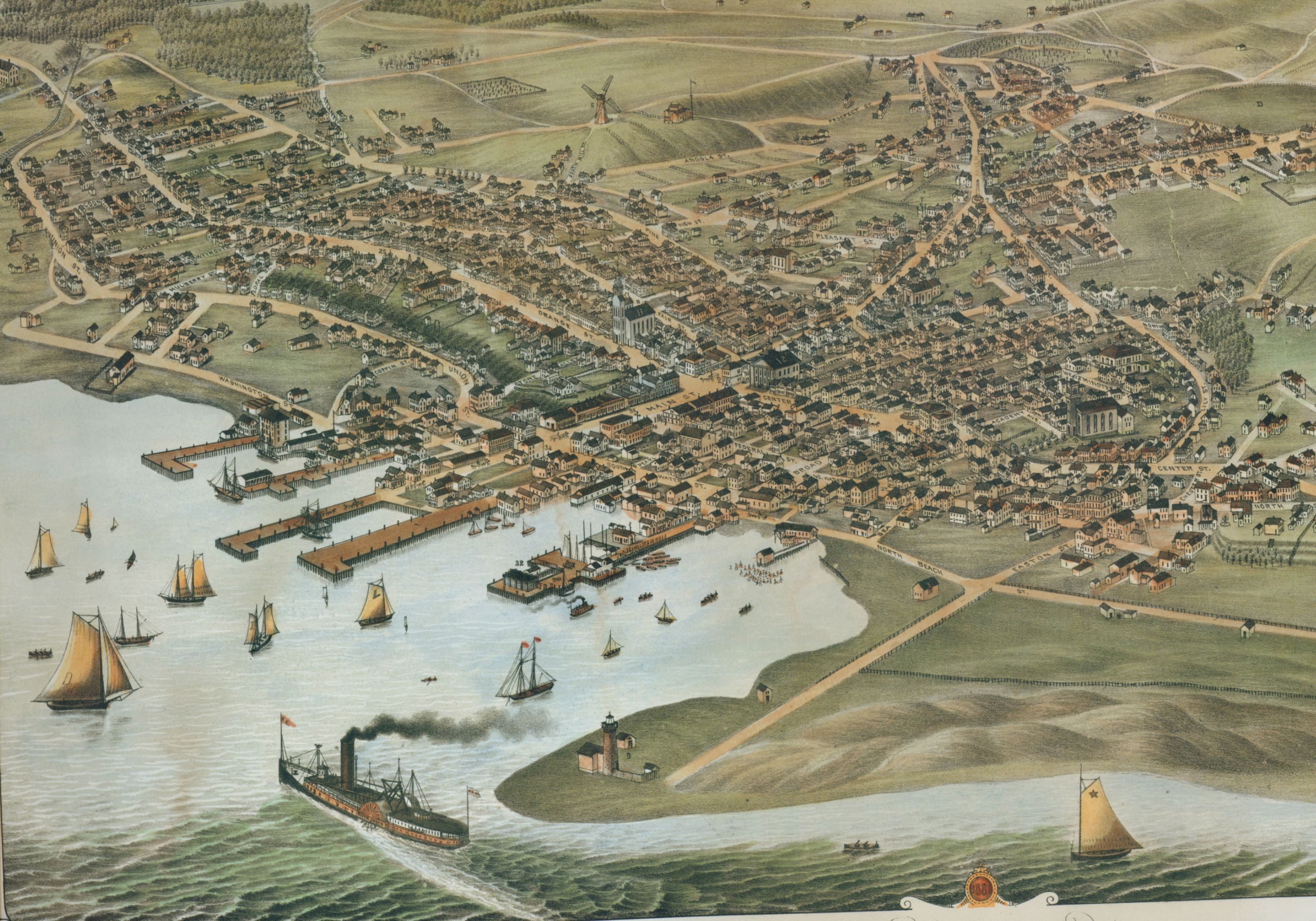Looking at Nantucket’s picturesque harbor, it is hard to imagine what Nantucket’s harbor looked like during the heyday of whaling. Nantucket was a dirty working port, teeming with activity in the process of preparing ships to go on long whaling voyages, and converting whales into usable products when they came home.
Sooty factories, warehouses, and workshops surrounded the harbor, employing over 1,100 workers. Skilled labor was in demand and much of the work was hazardous.

An unnamed writer, reflecting on those days, wrote to The Inquirer and Mirror in 1880, “There was work for every man then who wanted to work, and when the old South bell rung out the hour of noon, Main Street, as well as the other streets leading up from the wharves were filled with an army of workingmen, going up for their dinners.”
The vast majority of whaling ships were built off island, but much of the outfitting was done locally. The smaller boats launched for the “Nantucket sleigh rides” attached to harpooned whales were more likely to have been built on Nantucket. Because of the duration of whaling voyages, it was necessary for the ships to leave port with sufficient provisions and prepared to make repairs at sea.
Masts and spars spawned an entire industry of skilled carpenters. Each ship needed at least twenty-five different spars. Made of heartwood, spars were cut, rounded and shaped for individual ships. Ships also needed wooden blocks of a wide variety of sizes, most used to fasten ropes securely.
Cooperages manufactured wooden barrels, buckets and casks. Huge casks, usually made of white oak, stored whale oil; they had to be airtight and waterproof. Coopers were skilled carpenters who shaped wood into strong, flat-bottomed vessels, trimmed with iron. In the 1830s there were twenty-two cooperages on Nantucket turning out thousands of wooden containers.
Ships needed miles of rope. Ten ropewalks turned tons of hemp delivered from off island into rope of a variety of widths and lengths from slender fishing lines to huge, twisted ropes strong enough to hold heavy anchors, or to bind several tons of whale carcasses to the sides of ships. Work in ropewalks was hazardous. Workers breathed in fibers that hung in the stale air. As the name suggests, workers walked the rope the length of the long buildings, looping strands around machinery that stretched and twisted the fibers. These machines were capable of taking off fingers and arms. In addition, ropewalks were highly flammable and at least one major fire began in a ropewalk.
Blacksmiths working in hot, fiery forges turned out harpoons, lances, knives and other implements needed to hunt and dismember the whales. This was also dangerous work. In addition, blacksmiths manufactured cleats, hinges and anchor chains. At the peak of whaling, there were approximately a dozen blacksmith shops, most clustered around the harbor.
Each ship needed twenty to thirty sails, totaling over an acre of sailcloth. Sail making was highly skilled work requiring three-year apprenticeships. Each sail had to be carefully measured, cut and sewn. Making large sails necessitated ample space, and there were at least four large sail lofts on the island in the 1830s.
Other industries came into play when the ships returned laden with whale oil. Oil factories rendered the blubber into oil, and candle factories manufactured candles. Nantucket’s whale oil was considered the world’s finest and it lit streetlamps from Paris and London to New York and Chicago. Candle factories churned out millions of candles; at the peak, it is estimated that four million candles were shipped off island every year. Nantucket’s Whaling Museum is housed in the former Hadwen and Barney Candle Factory where visitors can see how candles were made. There were at least seventeen oil factories and nineteen candle factories on the island. Two more factories specialized in making the boxes for the candles.
It is hard to see traces of the island’s industrialized past, but not impossible. Some buildings that used to be cooperages, warehouses and factories have been converted into luxury homes.

